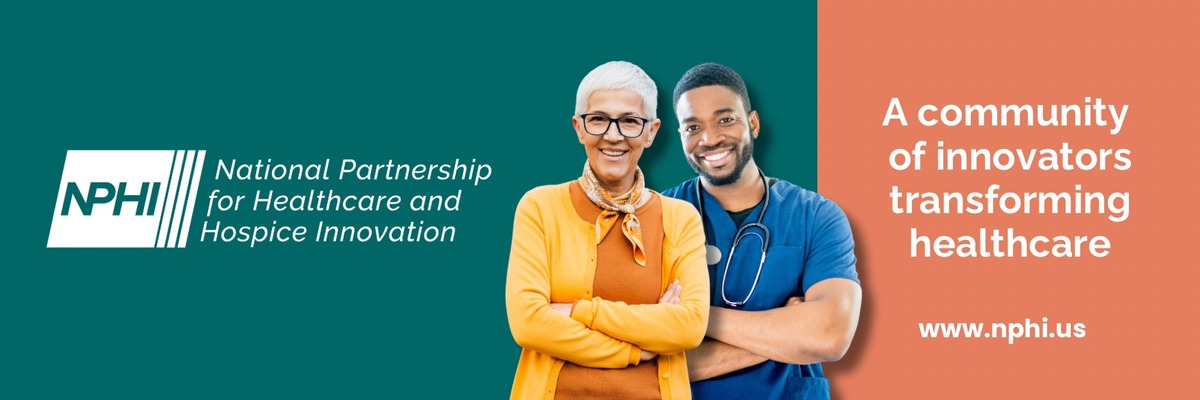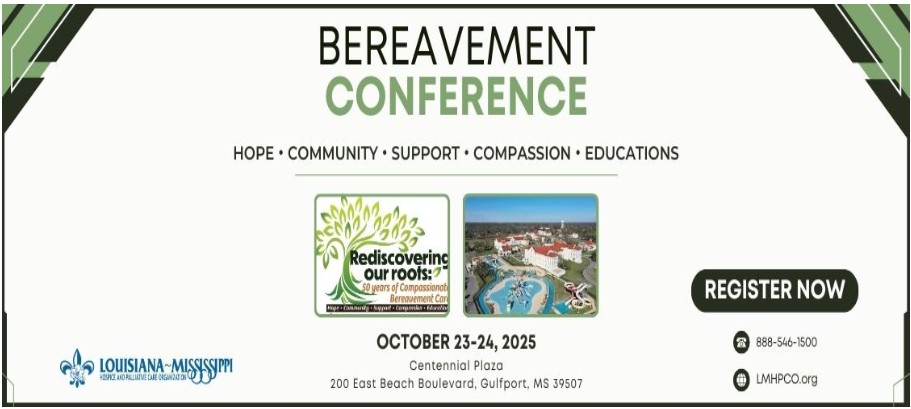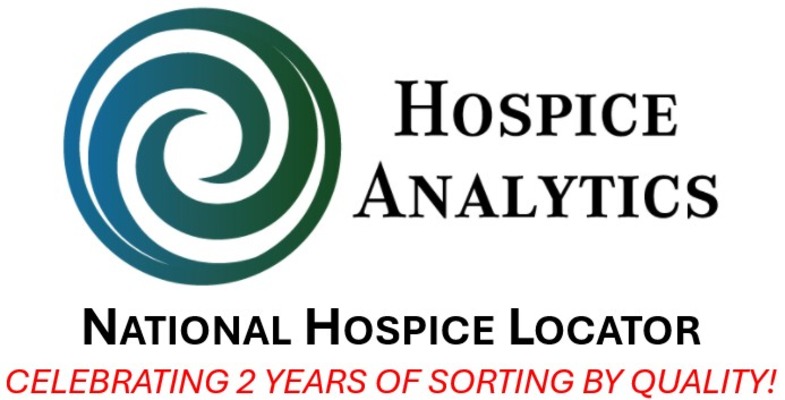Sign up for our free daily newsletters here! Note: subscribers can access our search feature!
Welcome to Hospice & Palliative Care Today, a daily email summarizing numerous topics essential for understanding the current landscape of serious illness and end-of-life care. Teleios Collaborative Network podcasts review Hospice & Palliative Care Today monthly content - click here for these and all TCN Talks podcasts.
3. Circle of Life opens home-based care center
4. Hospice of the Red River Valley's Fargo office relocates
5. We need to talk about hospice
6. What can we learn from the dying?
8. Palliative care may improve quality of life in esophageal cancer
13. Main Line Health cuts 200 administrative roles
14. Bettis Academy instills leadership skills with Eagles L.E.A.D. Program
You’re not imagining it. The ‘quad-demic’ is making everyone sick.
New Jersey Advance Media; by Jackie Roman; 1/27/25
A quadruple threat of viruses is driving up emergency room visits and hospital admissions across the United States, including in New Jersey. Public health experts warn a “quad-demic” — a contagious combination of COVID-19, influenza, RSV and norovirus — has increased pressure on New Jersey hospitals this winter. Emergency department visits and hospital admissions remain elevated for COVID-19, influenza, and RSV, according to the state’s latest respiratory illness surveillance report. ... The Centers for Disease Control and Prevention estimates that there have been at least 16 million illnesses, 190,000 hospitalizations, and 8,300 deaths from flu so far this season. Thirty-one of those deaths were among children, according to the CDC. [Click on the title's link for more data and a national map, with updates by the CDC on 1/22/25.]
Editor's note: How is this 'quad-demic' impacting your hospice and palliative care service areas? What infection control measures are you reinforcing for patient care and staff safety? Now's the time to assess needs, strengths, gaps and to take action.
[Hospice of the Western Reserve Volunteer] WWII veteran celebrates 100th birthday, years of service
Fox 8 WJW-TV Cleveland, OH; 1/24/25
What were you doing on this day 100 years ago? Well, if you were World War II Veteran Bob Zonneville, you were saying “hello” to the world! On Thursday, many of his friends and family got together at David Simpson Hospice House to celebrate this incredible accomplishment. Hospice of the Western Reserve hosted the event, which had a very special meaning to both the organization and Zonneville. Over the years, not only has this World War II veteran offered tireless support to the Hospice program, but he’s also responsible for raising nearly $100,000. Zonneville has been a passionate Hospice volunteer for decades. According to Hospice of the Western Reserve, Zonneville received the prestigious Chair’s Award for his extraordinary contributions to the hospice community in 2008. ...
 |
Circle of Life opens home-based care center
Talk Business & Politics, Arkansas; by Talk & Politics staff; 1/28/25
Nonprofit hospice provider Circle of Life recently opened the two-story, 27,133-square-foot Joey Feek Center for Home-Based Care in Lowell after a capital campaign raised over $12.5 million. According to a news release, the center will serve 93% of the nonprofit’s patients daily. “We want to express our deep gratitude to our community, board of directors, and dedicated staff for making this expansion possible,” CEO Catherine Grubbs said. ... Dee Vaughn, chief development officer, said the campaign surpassed its $12.5 million goal and had over 350 supporters. Circle of Life has more than 170 staff based at the new center, ...
Hospice of the Red River Valley's Fargo office relocates
NewsDakota.com, Fargo, ND; by Steve Urness; 1/27/25
Hospice of the Red River Valley is thrilled to share some wonderful news that marks a significant milestone in their 25-year dream for a community-based hospice house. On January 27, 2025, Hospice of the Red River Valley moved to a new and exciting location. Their new home is now at Heather’s House on Scheels Campus in South Fargo, located at 3800 56th Ave. S., Fargo, ND 58104. This move brings them one step closer to opening Heather’s House – the very first freestanding hospice house in North Dakota. Heather’s House will offer the community a peaceful, supportive environment where patients and families can find comfort, dignity and compassionate care.
 |
We need to talk about hospice
MedCity News; by Skelly Wingard, Asher Perzigian and Elizabeth Annis; 1/28/25
In the quiet corners of healthcare, there’s a conversation that needs to be had. It’s a conversation about hospice — a critical yet often misunderstood part of end-of-life care. ... Nearly three-quarters of hospice care agencies are for-profit ownership. ... The impact of these acquisitions on the industry is complex. ... On the one hand, these investments can bring valuable resources to hospice care, funding geographic expansion, scaling technological infrastructure, improving facilities and enhancing services. On the other hand, a strong focus on efficiency and optimization has led to challenges such as staff burnout, higher turnover, and decreased patient satisfaction when compared with non-profits. Coupled together, this complexity can contribute to reduced quality of care due to cost-cutting measures, aggressive marketing leading to overuse of services, increased billing and fraud and a lack of community investment. Not all for-profit hospices operate this way. ... [Click on the title's link to continue reading.]
What can we learn from the dying?
Newscastle's News Letter Journal (NLJ), Newcastle, WY; by Kelly Evans-Hullinger, MD; 1/26/25
For the last five years, I have had the great privilege of serving my local health system as Medical Director for Home Hospice. Every week I sit in a meeting with the multidisciplinary caretakers on this team ... Patients facing their own deaths want to talk about their lives. Our staff frequently tries to facilitate what they call a “life review” in which a patient can openly talk about their childhood, family, career, service, and sometimes their regrets. This is therapeutic for the dying patient and their loved ones. ... I have recently thought about this particular human need – to reflect and remember one’s life. I take this as a reminder to both seek those stories from my own loved ones (I wish I had asked my grandmother more questions about her life) and, perhaps, to tell and write about the things in my own life I would want to be remembered after I am gone. For if there is another thing I’ve learned serving patients on hospice, it is that my death is also inevitable; but, I think, life’s finality is what gives it beauty and meaning.
 |
Health equity guide aims to improve care for Black patients with serious illnesses
Healio; by Jennifer Byrne; 1/28/25
Black individuals in the U.S. with serious illnesses receive disproportionately poor pain management and health care communication, compared with white individuals, a focus group led by the Center to Advance Palliative Care showed. Black individuals with these illnesses — such as cancer, heart failure or dementia — also experience higher family caregiver burden, findings showed. To address these inequities, the Center to Advance Palliative Care (CAPC) issued a comprehensive guide titled, “Advancing Equity for Black Patients with Serious Illness.”
Palliative care may improve quality of life in esophageal cancer
Cure; by Tim Cortese; 1/27/25
Palliative care consultations helped patients with esophageal cancer at end-of-life experience better quality of life and less financial strain by reducing the need for intensive interventions, according to a poster presented at the 2025 ASCO Gastrointestinal Cancers Symposium. The mean length of hospital stay was 7.5 days (plus or minus 11.3 days) for patients who received palliative care and 8.9 days (plus or minus 14.9) for those who didn’t; and total charges were $97,879 (plus or minus $195,868) and $146,128 (plus or minus $321,830), respectively. ... Of patients to receive and not to receive a palliative care consultation, 0.9% and 1.6%, respectively, underwent chemotherapy; 12.3% and 18% underwent blood transfusion; and 28.5% and 41.0% underwent mechanical ventilation.
 |
DEA proposed telemedicine prescribing rule could burden hospice physicians and hospice operations
Morgan Lewis, Washington, DC; by Howard J. Young, Jacob J. Harper, and Roshni Edalur; 1/27/25
Signaling a possible future approach to regulating Schedule II-V prescribing via telemedicine in lieu of in-person examinations, on January 17 the DEA issued a notice of proposed rulemaking regarding its next iteration of controlled substance prescribing controls. With comments due March 18, 2025, the Proposed Rule is not subject to the Trump administration’s executive order freeze on new proposed regulations. [Click on the title's link to continue reading.]
Thinking innovatively about your nursing career development
Minority Nurse; by Keith Carlson, BSN, RN, NC-BC; 1/27/25
Your nursing career is yours to create, and with proper care, your path can be unique, innovative, and idiosyncratic. At the same time, your many obligations and responsibilities can steer you away from your uniqueness and leave you in a rut of choosing the path of least resistance. There are many strategies for choosing a career journey that fits your vision of who you want to be as a healthcare professional, and it’s worth exploring those strategies for the ones that can most readily move you forward. ... Thoughtful questions are a good place to begin your self-assessment. ...
- Looking back, how and why did you make certain choices?
- [Click on the title's link for more questions.]
Editor's note: What systems and support do you have in place to foster your employees' career ladders? What can you improve?
 |
Best small footprint design of 2024: PACE Center with homelike charm
Senior Housing News; by Andrew Christman; 1/27/25
Healthcare and social connections blend seamlessly in a new Program for All-Inclusive Care for the Elderly (PACE) location in Winchester, Virginia. The organization behind the project, Blue Ridge, was inspired by the “community village” concept in its new concept, which is a PACE center that conjures a more homelike than clinical atmosphere. The program resides within a compact footprint of 15,540 square feet, according to SueAnn Myers, executive director and project lead for Blue Ridge Independence at Home. Prioritizing accessibility and ease of movement, the location features wide hallways, ramps and “thoughtfully placed” handrails. Recessed carpets reduce issues for visitors with wheelchairs and the building features a warm contemporary aesthetic that draws inspiration from the surrounding Blue Ridge Mountains. Blue Ridge Independence at Home’s PACE center design in a small package snagged it the top spot in the small footprint category of the 2024 Senior Housing News Architecture and Design Awards.
Kaiser Permanente physicians negotiate new labor agreement
Hospice News; by Holly Vossel; 1/27/25
Resident physicians at California-based Kaiser Permanente have recently negotiated a new agreement that includes compensation increases and expanded mental health and wellness employee benefits. The agreement came after months of negotiations and included salary increases over the next three years, along with more paid time off and enhanced financial support for resident physicians. It also included roughly $40,000 to fuel an annual patient-project fund.
 |
Main Line Health cuts 200 administrative roles
Becker's Health IT; by Naomi Diaz; 1/22/25
Bryn Mawr, Pa.-based Main Line Health has eliminated approximately 200 administrative and management positions, including roles in IT, The Philadelphia Inquirer reported Jan. 22. The majority of the cuts targeted administrative support areas such as information technology, finance, human resources, revenue cycle, and accounting, according to Main Line Health CEO Jack Lynch. "The landscape in healthcare is awful, and it's only getting worse," Mr. Lynch told the publication. He cited several factors driving the decision, including inadequate payment increases from Medicare and Medicaid — which account for 65% of the system's patient coverage — rising insurance denials, and the delayed arrival of $25 million in federal COVID-19 aid.
Bettis Academy instills leadership skills with Eagles L.E.A.D. Program
The Post and Courier, North Augusta, SC; by Bianca Moorman; 1/27/25
Bettis Preparatory Leadership Academy is helping to build the next generation of leaders with its new Eagle's L.E.A.D. Initiative. Eagle's L.E.A.D. – which stands for Learn through Experience, Excel in Academics, Aspire to Inspire and Drive for Change – aims to teach students the skills needed to become leaders through hands-on service projects. The school officially launched the program on Oct. 28, 2024. ... Each grade level has selected a unique service project for the program. ... First-graders are partnering with Gentiva Hospice to learn about the work of first responders. Second-graders are collaborating with heart doctors to raise awareness about childhood heart disease. Third-graders are creating "little libraries" to place in various locations throughout the community. [Click on the title's link for grades 4-8.]
 |
The Fine Print:
Paywalls: Some links may take readers to articles that either require registration or are behind a paywall. Disclaimer: Hospice & Palliative Care Today provides brief summaries of news stories of interest to hospice, palliative, and end-of-life care professionals (typically taken directly from the source article). Hospice & Palliative Care Today is not responsible or liable for the validity or reliability of information in these articles and directs the reader to authors of the source articles for questions or comments. Additionally, Dr. Cordt Kassner, Publisher, and Dr. Joy Berger, Editor in Chief, welcome your feedback regarding content of Hospice & Palliative Care Today. Unsubscribe: Hospice & Palliative Care Today is a free subscription email. If you believe you have received this email in error, or if you no longer wish to receive Hospice & Palliative Care Today, please unsubscribe here or reply to this email with the message “Unsubscribe”. Thank you.

